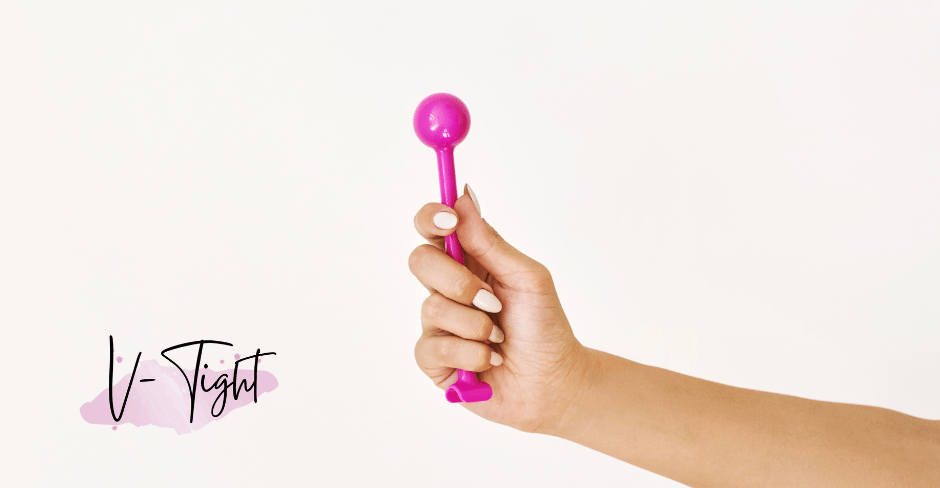The pelvic floor muscles, also called kegel muscles, are an important part of the female body. They are responsible for supporting the organs in the pelvic region, such as the bladder, uterus, and intestines. Training the cone muscles can help prevent health problems such as urinary incontinence and vaginal prolapse. In this article, we take a closer look at how to train kegel muscles and give you tips and tricks to keep your pelvic floor healthy.
How Do You Train Kegel Muscles?
To train kegel muscles you need to be aware of which muscles you need to contract. Below is a step-by-step guide on how to train your kegel muscles:
Identify the Pelvic Floor Muscles
To start training your kegel muscles, you first need to know which muscles to contract. Here are some ways to identify the right muscles:
- Try to interrupt your urine flow while urinating. The muscles you use to do this are the pelvic floor muscles.
- While sitting, try to squeeze your pelvic floor muscles as if you were holding something in your vagina.
- Visualize an elevator going up and down. Tighten your pelvic floor muscles when the lift goes up and relax when the lift goes back down.
Train Your Kegel Muscles
Now that you know which muscles to tighten, it's time to start exercising. Here are some tips for training your kegel muscles:
-
Start by tensing your muscles for 3-5 seconds and then relax them for 3-5 seconds. Repeat this exercise 10 times.
-
Gradually build up to tensing your muscles for 10 seconds and relaxing for 10 seconds. Repeat this exercise 10 times.
-
Perform these exercises 3-4 times a day.
-
Do these exercises regularly, at least 3 times a week.
Use Tools
There are several tools that can help you train your kegel muscles. Here are some options:
-
Use vaginal balls: Vaginal balls are small weights that are inserted into the vagina. By holding these balls in, you train your pelvic floor muscles.
-
Use kegel trainers: Kegel trainers are special devices that help you perform kegel exercises. These devices give you feedback on your performance and help you train your pelvic floor muscles in the right way.
-
See a physiotherapist: If you're having trouble contracting your pelvic floor muscles properly, a physiotherapist can help you train your muscles and improve your pelvic floor health.
Tips for Training Your Kegel Muscles
Here are some tips that can help you train your kegel muscles:
-
Make it a habit: Make training your pelvic floor muscles a regular part of your daily routine.
-
Be patient: It may take a while to see results. Be patient and keep practicing regularly.
-
Stay focused: During the exercises, make sure you fully concentrate on contracting and relaxing your muscles.
-
Combine exercises: Combine kegel exercises with other forms of exercise, such as yoga or Pilates, to improve your pelvic floor health.
-
Pay attention to your posture: Pay attention to your posture while training your kegel muscles. Make sure you are sitting upright and relaxed.
Frequently Asked Questions About Training Kegel Muscles
Here are some frequently asked questions about exercising kegel muscles:
-
Is it possible to overtrain your pelvic floor muscles? Yes, it is possible to overtrain your pelvic floor muscles. This can lead to muscle tension and discomfort. It is therefore important not to train too much and to take regular rest.
-
Can men also do kegel exercises? Yes, men can do kegel exercises too. These exercises can help prevent urinary incontinence and erection problems.
-
When should I see a doctor for pelvic floor problems? You should see a doctor if you experience urinary incontinence, vaginal prolapse, chronic pelvic pain, or other pelvic floor problems that affect your daily life.
Training your kegel muscles is an important part of maintaining a healthy pelvic floor. By regularly performing kegel exercises, you can prevent various health problems and improve your overall well-being. Use the tips and tricks in this article to train your kegel muscles and keep your pelvic floor healthy. Just remember to be patient and regto practice regularly. If you find yourself having trouble contracting the right muscles, consider seeing a physical therapist. With the right exercises and tools, you can strengthen your pelvic floor muscles and improve your overall health. Train your kegel muscles today and feel the difference!





